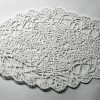-

Räume Zwischen Den Symbolen
Engulfed In Streaming RadianceCut paper
23 x 23cm
2011 -

Räume Zwischen Den Symbolen
Engulfed In Streaming Radiance side1Cut paper, 23 x 23cm, 2011 -

Räume Zwischen Den Symbolen
For The Edification of Beginning whiteCut paper, 26 x 23 cm, 2011 -

Räume Zwischen Den Symbolen
Phenomenology Of Spirit, Page183Cut paper, 23x28 cm, 2011 -

Räume Zwischen Den Symbolen
Phenomenology Of The Spirit, Page 183Cut paper, 23x28 cm, 2011 -

Räume Zwischen Den Symbolen
In Contemplation Of The BrandenbergCut Paper, 23x23 cm, 2011 -

Räume Zwischen Den Symbolen
In Contemplation Of The Brandenburg gateCut Paper, 23x23 cm, 2011 -

Räume Zwischen Den Symbolen
SwastikasCut Paper, 28x 23 cm, 2011 -

Räume Zwischen Den Symbolen
Thus It TranspiredCut paper, 15x31cm, 2011 -

Räume Zwischen Den Symbolen
Thus It TranspiredCut paper
15x31cm,
2011 -

Räume Zwischen Den Symbolen
International SerpentCut paper, 12'x12", 2012 -

Räume Zwischen Den Symbolen
These cut paper works are created through overlaying text in a matrix to obscure the original message and reveal a pattern composed of symbols.The intricate detail work is inspired by micrographic texts by Hebrew scribes who sculpt, skew and stretch letters to create dynamic and textured compositions. Through using the form of a traditional Jewish paper-cut, these loaded texts are abstracted and cut into fragile lace.
The paper-cut was once exceedingly common in Ashkenazic-Jewish homes, reaching its height of popularity in the 19th century into the early 20th. Paper-cuts served religious and other ritual needs, such as indicating the direction of prayer, remembering family deaths, Holiday decoration, and warding off the evil eve. Artists adapted the cut paper technique that Jewish merchants had met through their travels to the Far East in the 14th century as well as the 17th century German paper-cuts, which were known as “Scherenschnitt” (scissor-runs). In 1345, Rabbi Shem-Tov ben Yitzhak ben Ardutiel wrote “The War of the Pen Against the Scissors”. In this Hebrew text he recounted an occasion in which his inkwell froze on a cold winter’s evening. In order to continue his studies he resorted to cutting the letters out of the paper.
Created by Hebrew scribes in the late 9th century, micrography broke the monotony of transcribing the Masorah, which included a system of marginal biblical notes that counted and listed textual details. This style of forming minute text into imagery enabled scribes to render images without blatantly violating Jewish law forbidding representation. This art form spread with the Jewish diaspora and evolved within the local cultural milieus. Micrography exemplifies the Jewish tradition of retaining identity while adapting to and affecting the local culture. Micrography also demonstrates the enduring Jewish pursuit of interpreting and navigating their evolving traditions.
